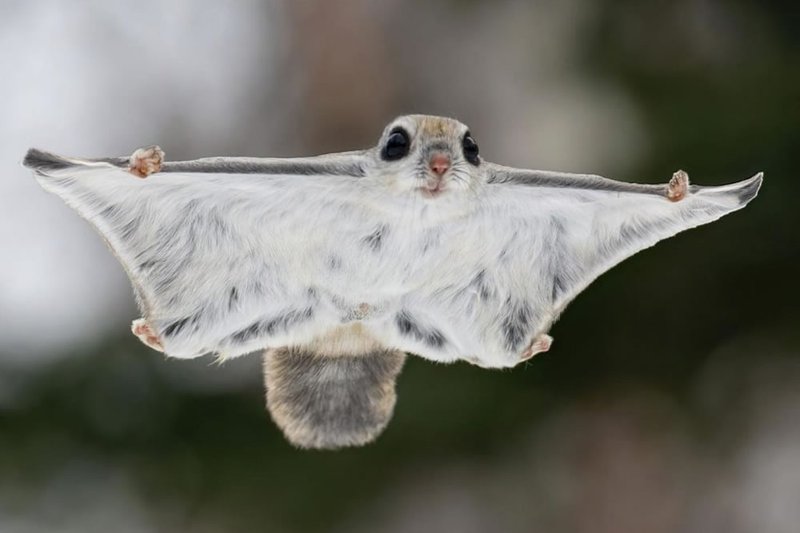
In different cultures, flying squirrels are not just animals; they represent certain traits or themes. From Native American tales to Asian mythologies, these creatures have taken on roles that highlight their unique abilities and ecological niches. It’s fascinating how a little animal can weave itself into the fabric of human storytelling, drawing connections between nature and human experiences. So, let’s explore how this remarkable creature has inspired myths, legends, and symbols across cultures.
The Flying Squirrel in Native American Folklore
In many Native American cultures, animals play a critical role in teaching moral lessons and explaining natural phenomena. The flying squirrel, with its gliding abilities, often symbolizes adaptability and resourcefulness. For example, some tribes tell stories of a flying squirrel who helped a young child find their way home after getting lost in the woods. This narrative not only emphasizes the squirrel’s keen senses but also reflects the importance of listening to nature and relying on one’s instincts.
Moreover, flying squirrels are sometimes seen as messengers between worlds. Their ability to soar through the trees makes them perfect symbols of guidance during life’s transitions. In stories, they might appear at crucial moments, offering support or insight when characters face challenges. This connection to the spirit world further enriches their significance in cultural storytelling.
The Flying Squirrel in Asian Cultures
Across various Asian cultures, flying squirrels are often revered for their agility and cleverness. In Chinese folklore, the flying squirrel is associated with the moon, symbolizing curiosity and exploration. Tales often revolve around their nocturnal nature, depicting them as guardians of the night who possess mystical abilities. In these stories, flying squirrels glide gracefully through the air, gathering wisdom from the stars.
Similarly, in Japanese culture, flying squirrels are sometimes featured in children’s stories. They may serve as playful characters who embark on adventurous journeys, teaching young listeners about bravery and friendship. These tales emphasize the joy of exploration and the bonds formed through shared experiences, illustrating important life lessons.
Symbolism of the Flying Squirrel
When considering the symbolism of the flying squirrel, several themes emerge. First, there’s the idea of transformation. Just as the flying squirrel transforms from a ground-dweller into a skilled glider, stories often reflect the journey of personal growth and change. This metamorphosis resonates with many seeking to overcome obstacles in their lives.
Another prominent theme is balance. Flying squirrels navigate the treetops with grace, reminding us of the importance of maintaining equilibrium in our lives. They teach us to adapt, whether in nature or human relationships, showcasing the necessity of being flexible and resourceful during challenging times.
Flying Squirrels in Modern Media
As we transition into contemporary representations, flying squirrels have found their place in movies, books, and even video games. In animated films, for instance, they are often depicted as quirky, brave characters who face fears and embark on epic quests. Their nimble nature makes them ideal heroes or sidekicks, enchanting audiences with their charm and adventurous spirit.
Additionally, flying squirrels often symbolize environmental concerns in literature. As their habitats face threats from urban development, stories about them encourage discussions around conservation. This connection helps raise awareness about the delicate balance of ecosystems and reinforces the idea that every creature, no matter how small, plays a role in the health of our planet.
The Role of Flying Squirrels in Ecological Symbolism
Beyond folklore and media, flying squirrels serve as indicators of a healthy environment. Their presence often signals thriving forests and healthy ecosystems. When communities engage in conservation efforts, the flying squirrel becomes a symbol of hope—a reminder that our actions can restore balance to nature. This ecological symbolism links their cultural representation back to real-world issues, emphasizing the importance of coexistence with wildlife.
Moreover, flying squirrels’ gliding abilities can inspire innovations in technology. Engineers and designers look at their unique adaptations to create products that mimic their aerodynamic qualities. This blend of nature and technology showcases how deeply embedded flying squirrels are in our understanding of design and function, further enhancing their cultural significance.
When we take a step back and look at how the flying squirrel is represented across various cultures and folklore, it becomes clear that this little creature packs a punch. From wisdom and guidance in Native American stories to the exploration themes in Asian traditions, their roles reflect essential human experiences. These flying acrobats symbolize adaptability, transformation, and the balance we all seek in life.
As we continue to see flying squirrels in modern media and conservation discussions, we can appreciate their ongoing legacy. They remind us to embrace our own journey of growth and exploration while urging us to protect the delicate ecosystems they represent. So, the next time you catch a glimpse of a flying squirrel, remember—there’s a rich tapestry of culture and meaning behind those graceful glides.

